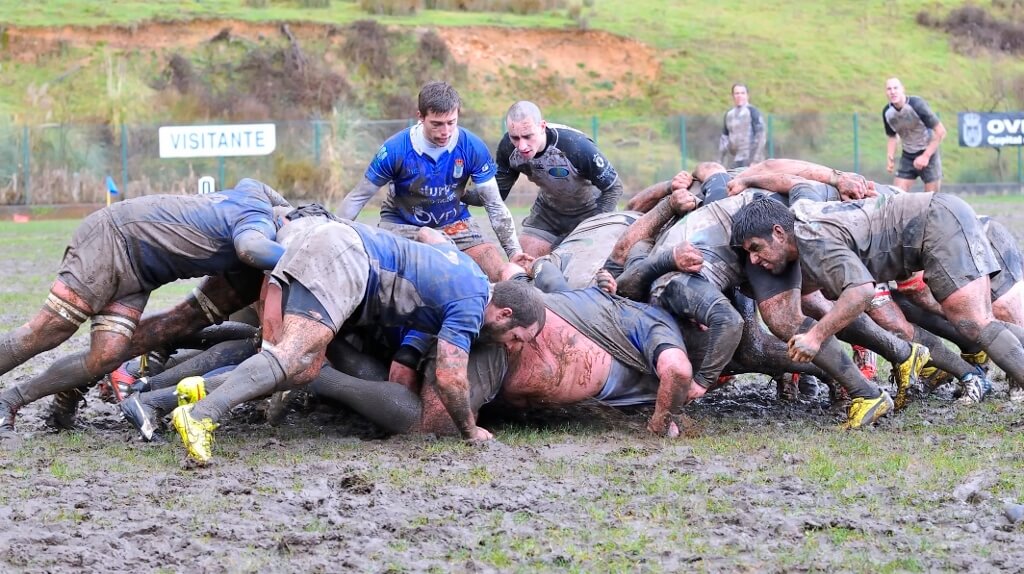Sport of all kinds is watched by millions of viewers around the world. Content marketing dreams of legions of devoted fans like these - is there anything marketers can borrow from the tribal worship of sporting super stars?
What Can Content Marketing Learn From Sport?
Sport of all kinds is watched by millions of viewers around the world. Content marketing dreams of legions of devoted fans like these - is there anything marketers can borrow from the tribal worship of sporting super stars?

If you’re in England, you probably noticed a big rugby event happening around you lately. It’s of course the Rugby World Cup - and its presence has been difficult to avoid over the past few months. This example isn’t isolated though - from the Premier League to the Olympics, sporting events have the ability to unify a community or a nation – whether they’re actively viewing it or not.
Shop windows fill with bunting and team flags, hashtags of support for the athletes are plastered on billboards, and our social newsfeeds fill with every brand’s latest take on the event. Particularly, ever since the ‘American-biscuit-example-that-shall-not-be-named’ incident, brands have continued to search for the Holy Grail that allows them to enter the conversation with the nation through defining moments in sport.
Sometimes this juxtaposition makes for the perfect score, but more often than not, a brand jumping into the conversation looks worse than Australia’s Fourth Ashes Test this past August.
So what is it about sport that makes it so captivating to a community? What makes major sporting events so appealing to brands? And furthermore, how can marketers avoid the embarrassment when creating sport content? I’ve sat down with several sport content creators to get their take on this.
In sport content, everyone is a player
Previously, I’ve highlighted the importance of quality content in music and content that can tell a story in film, but the sport industry doesn’t always fit into those rules.
Consider this example: which is the best piece of content? Is it watching Jessica Ennis-Hill run across the finish line live on TV? Is it an interest piece in a national newspaper, describing how she trains for each meet? Is it a short film commissioned by Team GB to give an overview of the athletes?
Is it Jessica herself, posting an Instagram video of her warming up minutes before she reaches the track? Is it her latest sponsor tweeting out words of support with an eye-catching image? Or is a Snapchat of friends down the pub celebrating the moment she crosses the finish line?
Now imagine all of these pieces of content were released within minutes of each other. It’s hard to determine which piece is the best, because it depends on your relationship to the event or sport – but it’s certainly a different content model than other sectors.
In sport content, everyone is a player in content creation, and it’s all happening at the same time. Commercial Director for Factory Media Nick Bradley’s take on this is that ‘everyone is a filmer and producer’. He points to the increase in drone purchase as one of the reasons for this trend.
Because of this we know that viewers are being bombarded with content. So how do you get any cut through with the plethora of content being created around sport? The content can be as grainy or as glossy as one need, but what matters is that it is part of a shared moment.
Real-time planning v right-time planning
The challenge with these national sporting moments is that everyone (read: every brand) feels it’s their duty to have a voice in said moment. It’s understandable why everyone wants to be involved – in no other sector will an entire community stop and tune in to hear ‘who won the game’.
Maybe in politics, but that’s another article for another day. However, because of this urge to get involved with the national conversation, brands tend to focus on real-time planning. That is, brands think about how they’ll get their message heard during the big game, whereas leagues, teams or athletes think about right-time planning, or how the content they create is most relevant to the fans and game.
Liam Almond, Sales Executive for ESPN notices ‘there is so much branded content […] for the sake of being around sport, that doesn’t actually offer any benefit to the user’. Therefore it is even more important for brands to consider how relevant they are to the sport and the conversation they are trying to join.
Jim Dowling, Managing Director of Cake and Havas Sports & Entertainment, highlights that, ‘The sports fan is extremely quick at spotting a fraud. People who create the content need to either know, or lean heavily on people who know, the game back-to-front and from its roots to the elite’.
Almond points to a content piece ESPN did in partnership with Brand USA, where they encouraged consumers to visit America by showcasing the sporting events or stadiums across the US as a successful way of engaging fans and brands.
Dowling feels that ‘brands who capture that escapism or the fantasy of sport’ are the most successful and points to the 1998 Reebox ad ‘Theatre of Dreams’ as a prime example.
Or, as Adam Tindall, Associate Director for Perform Media notes, the launch of Arsenal’s kit sponsor, Puma offers an insight into great sport content as well.
Puma - Arsenal Away Kit Launch 15/16 from Taro Russell on Vimeo.
What is important to note is that content created at the right moment for sport works best when it plays on a shared experience. Digital has made it possible for us to share those experiences more quickly, but it’s also paved the way for a new era of sport.
eSport: The new kid on the team
It may seem odd to think of now, but eSport is making a real play for traditional sport. For those who aren’t aware, eSport is when professional video gamers play against each other for a prize. There’s a real challenge to encourage under-25s to tune in to live TV due to video streaming services, and eSport offers an alternative to that challenge. The alternative is offering viewers a chance to see their favourite players playing their favourite video games nearly 24/7.
Neville Upton, Director and Co-Founder of Gfinity say they are ‘already at over 50m views and 12.5m hours of viewing this season’ - a figure some broadcast sports could only hope to reach. Upton continues saying that ‘we have so much content of the matches as they run all weekend…’
So, much like traditional sport, eSport content is competing for attention against other pieces of eSport content. However, Upton goes on to state that ‘the challenges are to ensure we also weave in the human dimension outside of the match’.
From the county cricket leagues to the Call of Duty teams, the way in which we consume sport content has seen a significant shift. There’s an influx of content to consume across multiple media. But what must be remembered, is that it’s the shared experience of the sport that is most important for bringing those communities together.
Thanks for signing up to Minutehack alerts.
Brilliant editorials heading your way soon.
Okay, Thanks!



